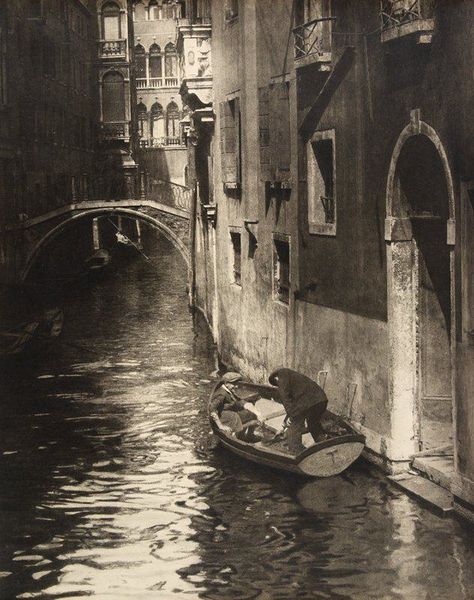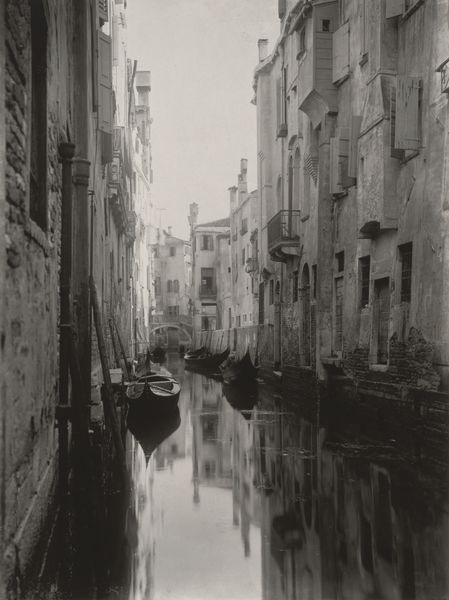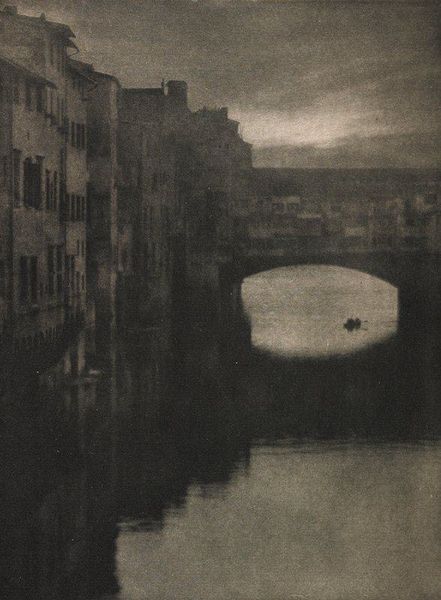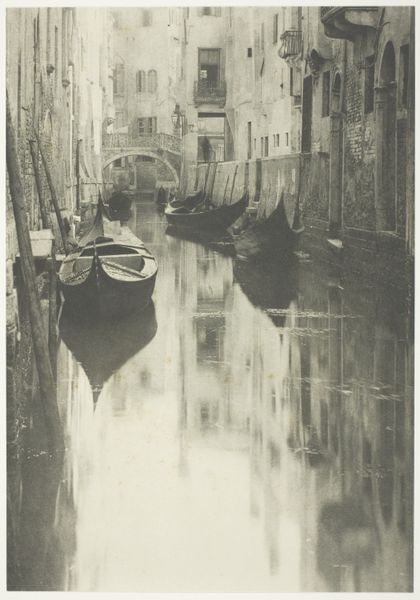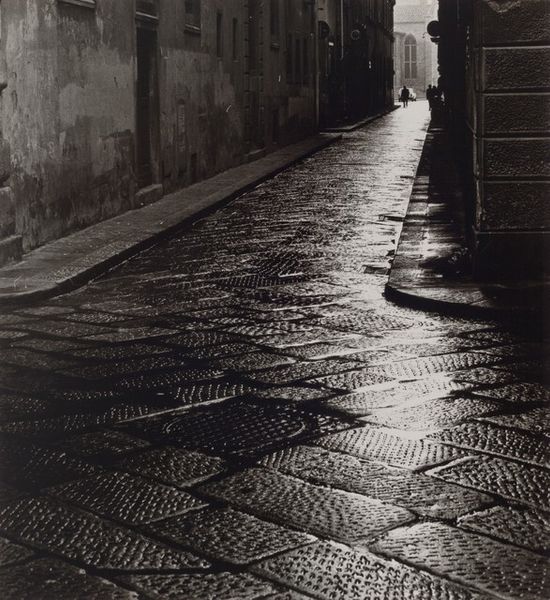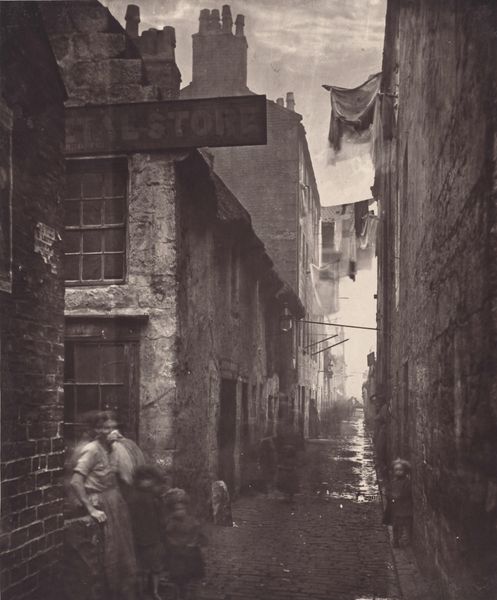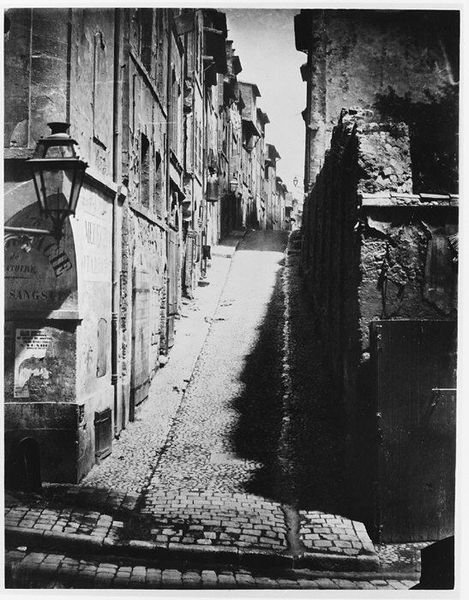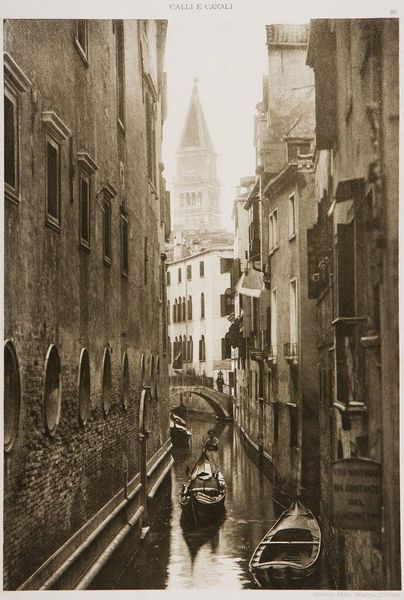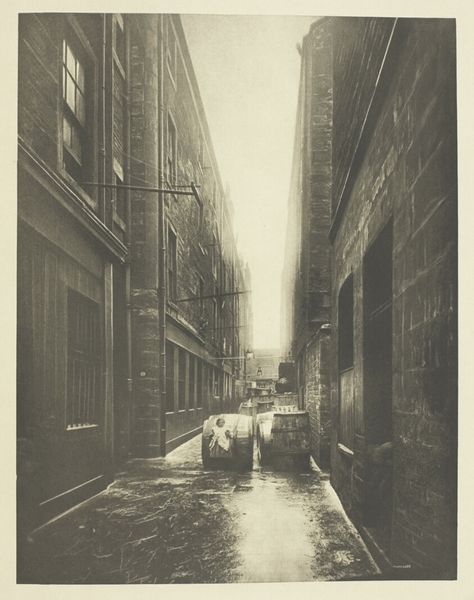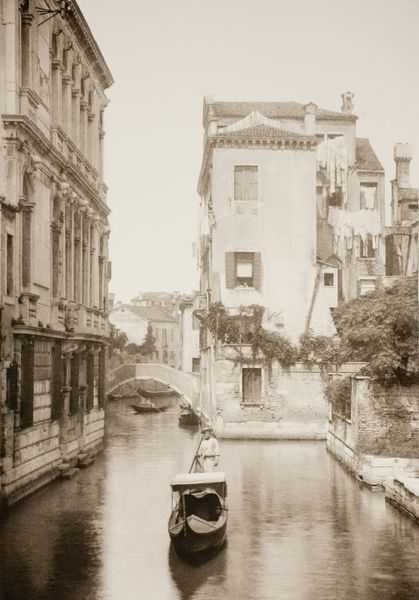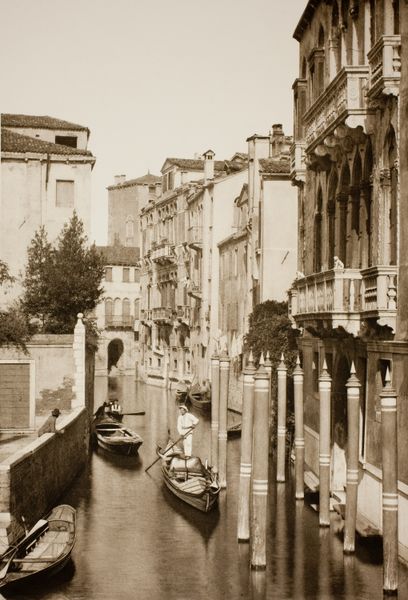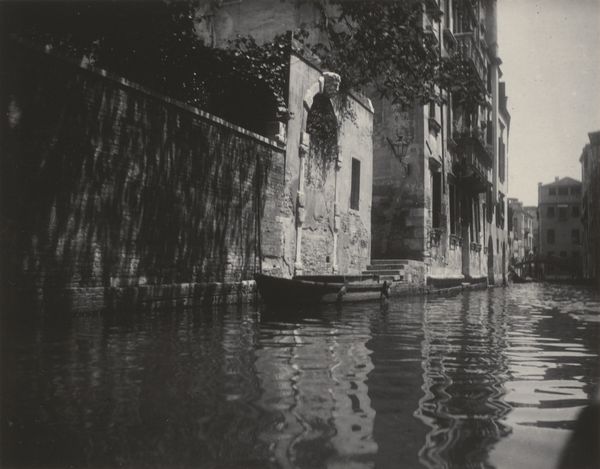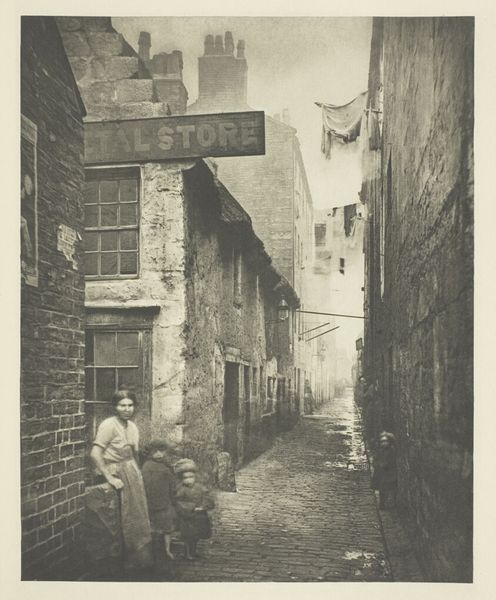
photography, gelatin-silver-print
#
black and white photography
#
pictorialism
#
street-photography
#
photography
#
chiaroscuro
#
gelatin-silver-print
#
monochrome photography
#
19th century
#
fog
#
water
#
cityscape
#
film
#
monochrome
Dimensions: 22 x 28 cm
Copyright: Public domain
Editor: We’re looking at Nicola Perscheid's "Venedig - Canale Grande," a gelatin silver print from 1929. The way the light catches the water is mesmerizing, but there’s also a certain stillness and mystery in the air. What compositional elements stand out to you in this piece? Curator: The manipulation of light and shadow is masterful. Perscheid's utilization of chiaroscuro – the stark contrast between light and dark – creates a pictorial depth that transcends the two-dimensionality of the print. Notice how the vertical lines of the buildings converge, leading the eye deeper into the canal's recession, reinforcing the pictorial structure. Editor: I see what you mean. The buildings almost seem to press in on the water, and the figures in the boats are so small, they’re almost lost in the architecture. It gives the image a really compressed feeling. Curator: Indeed. The compression you perceive results from a carefully calibrated tonal range. The gradations within the grays and blacks define shape and space and unify foreground, middle ground and background into a single visual field. The material qualities of the print itself contribute: the surface texture and tonal warmth counteract any sense of stark realism. How do you see those textures and warm tones working within the pictorial space? Editor: I guess it gives the whole image this dreamy or romantic feeling that’s not like a straightforward document. It’s almost abstracted, in a way. Curator: Precisely. Perscheid is employing the techniques of Pictorialism; striving to elevate photography to the status of fine art through careful manipulation of the image. That manipulation of tonal and material qualities disrupts the sense of conventional documentation you mentioned and contributes to its strength. Editor: I learned that it's important to really examine the way light, shadow, and even the physical material itself are constructed, more than just recognizing the image. Curator: Exactly, because by closely observing structure, we learn to 'read' the artistic meaning more acutely.
Comments
No comments
Be the first to comment and join the conversation on the ultimate creative platform.
